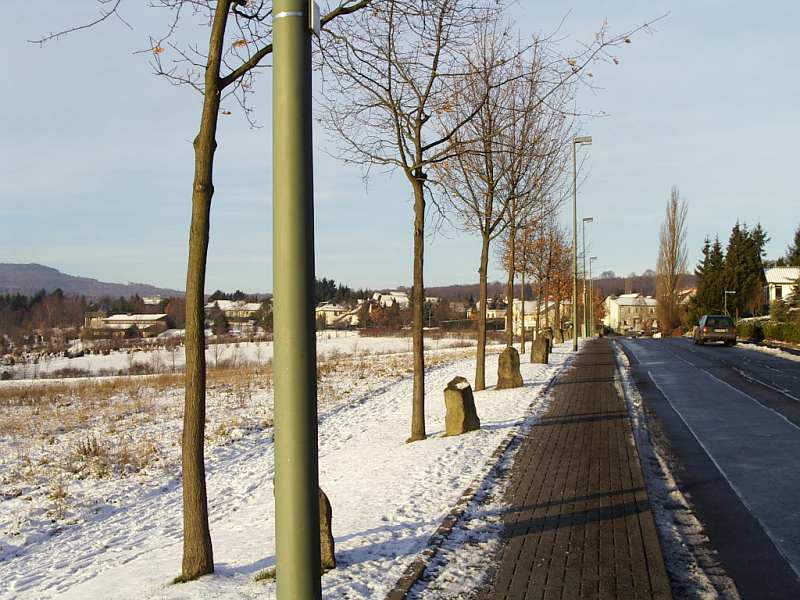Following on from my last post I thought I would briefly mention another famous European environmental art intervention from the eighties, Joseph Beuys' 7000 Oaks (1982-87). Here's a description by the Dia Foundation, who partly sponsored it:
Joseph Beuys’s project 7000 Eichen (7000 Oaks) began in 1982 at Documenta 7, the large international art exhibition in Kassel, Germany. His plan called for the planting of 7,000 trees—each paired with a columnar basalt stone approximately four feet high and positioned above ground—throughout the greater city of Kassel. With major support from Dia Art Foundation, the project was carried forward under the auspices of the Free International University and took five years to complete; the last tree was planted at the opening of Documenta 8 in 1987. Beuys intended for the Kassel project to be the first stage in an ongoing scheme of tree planting that would extend throughout the world as part of a global mission to spark environmental and social change. Locally, the action was a gesture toward urban renewal.
I have never been to Kassel but it must be fascinating to wander round and see how these trees are getting on. How many of the originals are still there? It is easy to imagine that the basalt columns are no more resistant to developers and planning decisions than the living trees. There were large protests near me recently at the felling of the Happy Man Tree, a much-loved 150-year old London plane tree. It made me think back to one of the first posts I wrote for this blog, on Charlotte Mew's poems about the 'murder' of the great planes opposite her home.
I came across an interesting essay on a blog by Andrew Bruce that gives some information on how the Joseph Beuys trees have fared. He draws on an article by Stephan Körner and Florian Bellin-Harder, 'The 7000 Eichen of Joseph Beuys – Experiences After Twenty-Five Years' (2009). Perhaps unsurprisingly, many trees had not been well cared for. They estimated that '70 replacement trees are required annually – these replacements are not true Beuys trees, the basalt column is removed upon the death of an original.' However,
There are exceptions to the poor state of the trees as reported by Körner and Bellin-Harder. Volunteer groups have carefully maintained several groups of trees. Other trees have become beloved foci of community activity. The study gives an example of a Beuys tree planted at an intersection that was closed to traffic at the behest of a citizens group just prior to Beuys’ action. The linden in this Plätzchen (little square) has been the site of ‘street festivals, baptisms, and other parties such as children’s birthdays’, children also meet there to walk to school together and play there after school. The lives of trees like this one come closer to the social relevance Beuys intended...

